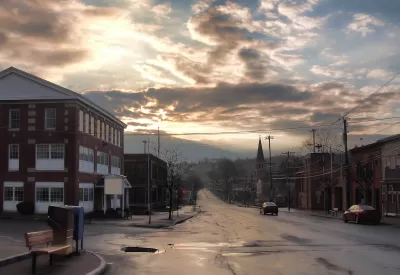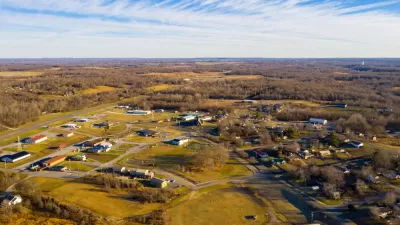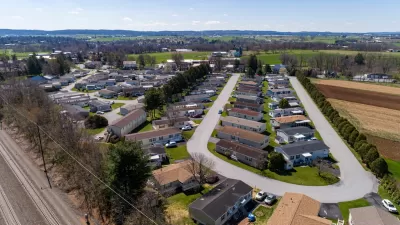Rural U.S. communities are poised to lose hundreds of thousands of affordable housing units as federally backed mortgages mature.

Rural U.S. communities are losing affordable housing at an alarming pace, creating a crisis in many places unused to tight housing markets and high prices.
As Bill Conroy explains in HousingWire, the crisis is compounded by the threat posed to the U.S. Department of Agriculture’s (USDA) Section 515 rural housing assistance program, which “faces a wave of mortgage maturities and payoffs on the thousands of affordable-housing complexes it has helped to finance over the years — with no new construction carried out under the program since 2012.”
Once the government-supported mortgages terminate, property owners often turn affordable housing to market-rate units. “In fact, if nothing is done, this USDA program — called Section 515 — is projected to lose up to 137,000 affordable-housing units between 2023 to 2033 nationwide due to mortgage maturities alone, according to USDA projections, ‘with a potential to lose approximately 333,000 units by the year 2050.’”
To address the issue, the proposed Rural Housing Service Reform Act (RHSRA) would decouple rental assistance from the Section 515 mortgages so that assistance recipients can continue using the program after mortgages expire and make it easier for nonprofits to buy properties with expired 515 mortgages. The proposal would also expand a rural housing voucher program, Section 542, to allow for more flexibility. Conroy points out that the RHSRA does not address the lack of new construction of Section 521 housing.
FULL STORY: Rural America is losing affordable housing at a crisis pace

Maui's Vacation Rental Debate Turns Ugly
Verbal attacks, misinformation campaigns and fistfights plague a high-stakes debate to convert thousands of vacation rentals into long-term housing.

Planetizen Federal Action Tracker
A weekly monitor of how Trump’s orders and actions are impacting planners and planning in America.

San Francisco Suspends Traffic Calming Amidst Record Deaths
Citing “a challenging fiscal landscape,” the city will cease the program on the heels of 42 traffic deaths, including 24 pedestrians.

Defunct Pittsburgh Power Plant to Become Residential Tower
A decommissioned steam heat plant will be redeveloped into almost 100 affordable housing units.

Trump Prompts Restructuring of Transportation Research Board in “Unprecedented Overreach”
The TRB has eliminated more than half of its committees including those focused on climate, equity, and cities.

Amtrak Rolls Out New Orleans to Alabama “Mardi Gras” Train
The new service will operate morning and evening departures between Mobile and New Orleans.
Urban Design for Planners 1: Software Tools
This six-course series explores essential urban design concepts using open source software and equips planners with the tools they need to participate fully in the urban design process.
Planning for Universal Design
Learn the tools for implementing Universal Design in planning regulations.
Heyer Gruel & Associates PA
JM Goldson LLC
Custer County Colorado
City of Camden Redevelopment Agency
City of Astoria
Transportation Research & Education Center (TREC) at Portland State University
Jefferson Parish Government
Camden Redevelopment Agency
City of Claremont





























